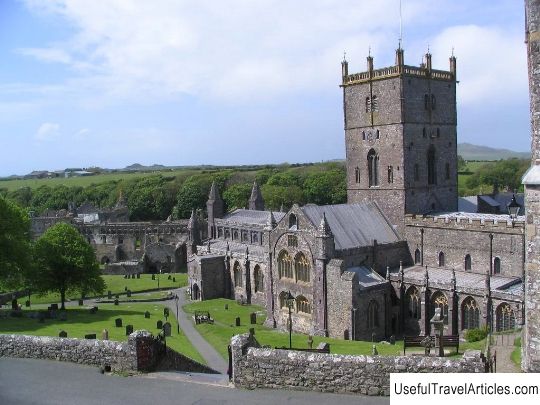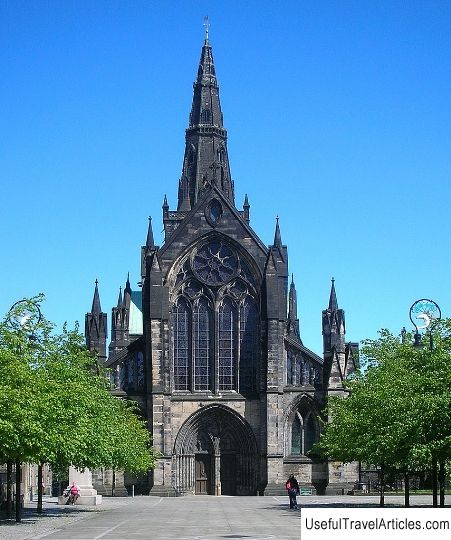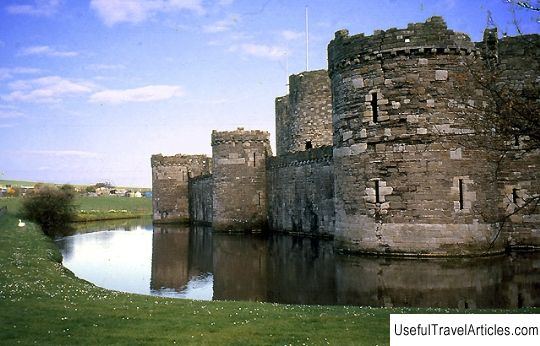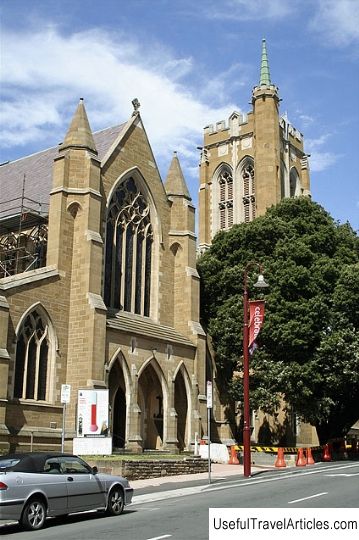Saint David's description and photos - Great Britain: Wales
Rating: 9,2/10 (2323 votes) 
Saint David's description and photos - Great Britain: Wales. Detailed information about the attraction. Description, photographs and a map showing the nearest significant objects. The title in English is Saint David's. Photo and descriptionSt. Davids is the smallest city in Britain, both in size and population, with less than two thousand inhabitants. The city stands on the Aline River on the St. Davids Peninsula in the very west of Wales. The main attraction of the city is the Gothic Cathedral of St. David, the patron saint of Wales. His relics rest in the cathedral. A small settlement existed on this site even under the Romans, but the current city arose around the cathedral. According to legend, the monastery community was founded here in the 6th century by Saint David himself, then Bishop of Menevia. The settlement has been attacked many times, but has retained its status as a cultural and religious center. In 1081, William the Conqueror visited the monastery as a pilgrim, thereby recognizing its status as a shrine. In 1090, the Welsh scholar Rigivarch wrote the Life of Saint David in Latin, which marked the beginning of the cult of Saint David as the patron saint of Wales. In 1115 Bernard was appointed Bishop of St. Davids. He is engaged in the restoration and expansion of the monastery, strengthening its position. Under his leadership, the construction of a new cathedral began, and in 1123 he received papal privileges, according to which two pilgrimages to St. David's Cathedral were equated to a pilgrimage to Rome, and three to Jerusalem. St. Davids is becoming a very popular pilgrimage center - and the need arises for the construction of a new cathedral. The cathedral is being built very quickly, but many problems arise almost immediately. In 1220, the central tower collapsed, then the cathedral was badly damaged by earthquakes in 1247-48. Under Bishop Gover, the cathedral is being reconstructed and completed, in particular, the bishop's palace is being built, which now is a picturesque ruin. At the beginning of the 16th century, the Holy Trinity chapel was built with the famous fan-shaped ceiling. Some believe that this particular ceiling served as a model for the construction of King's College, Cambridge. During the Civil War, the cathedral was practically destroyed by parliamentary troops. The restoration of the cathedral began at the very end of the 18th century and was mainly completed in the middle of the 20th century, but restoration work continues to this day. In 1995, by decree of Elizabeth II, St. city status.     We also recommend reading Monument to I. F. Kruzenshternu description and photo - Russia - Saint Petersburg: Saint Petersburg Topic: Saint David's description and photos - Great Britain: Wales. |




